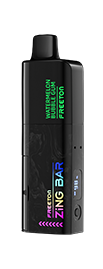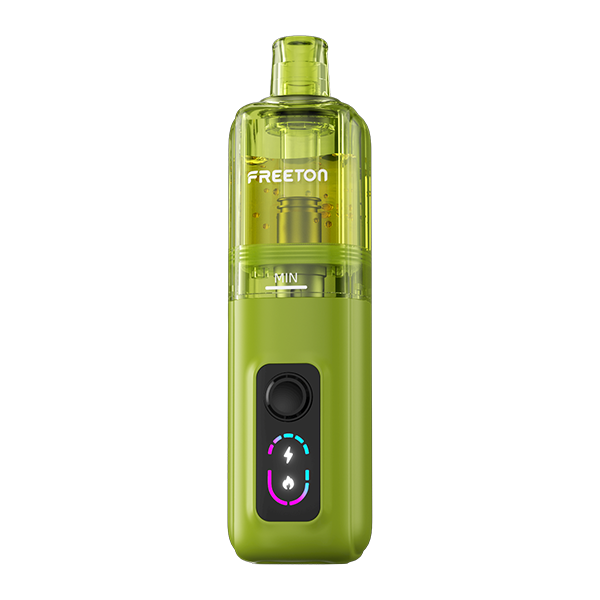
The evolution of smoking habits has witnessed a significant paradigm shift with the emergence of disposable electronic cigarettes. As these portable vaping devices gain traction, a critical need arises to comprehensively assess their safety. This exploration aims to illuminate various facets of disposable e-cigarettes, delving into their composition, nicotine levels, and safety considerations, especially when […]
The evolution of smoking habits has witnessed a significant paradigm shift with the emergence of disposable electronic cigarettes. As these portable vaping devices gain traction, a critical need arises to comprehensively assess their safety. This exploration aims to illuminate various facets of disposable e-cigarettes, delving into their composition, nicotine levels, and safety considerations, especially when juxtaposed against traditional smoking.
In an era where health consciousness is paramount, understanding the safety profile of disposable e-cigarettes becomes imperative. This discourse will navigate through the intricate components of these devices, the health implications of varying nicotine levels, and the comparative safety analysis against traditional smoking.
Stay engaged as we unravel the complexities surrounding the safety assessment of disposable electronic cigarettes, providing you with the information needed to make informed choices in the ever-evolving landscape of smoking alternatives.
Key Components: Understanding the Composition of Disposable E-Cigarettes
Disposable electronic cigarettes consist of intricate components, each playing a crucial role in their function. The e-liquid, typically containing nicotine, propylene glycol, vegetable glycerin, and flavorings, is vaporized by the heating element powered by a battery. The safety of these components, especially in terms of potential reactions or harm during use, is a focal point in assessing the overall safety of disposable e-cigarettes.
The battery, usually lithium-based, poses considerations regarding its stability and the potential for overheating. The heating element itself, responsible for vaporizing the e-liquid, needs scrutiny to ensure it operates efficiently without producing harmful byproducts. Understanding these components is fundamental to evaluating the safety profile of disposable e-cigarettes.
Nicotine Levels and Addiction: Exploring Health Implications
Nicotine, a central component in both traditional and electronic forms of smoking, raises concerns about addiction and health implications. Disposable e-cigarettes offer varying nicotine concentrations, necessitating a closer examination of the potential addictive properties and health risks associated with different levels. Balancing user satisfaction and harm reduction is crucial in assessing the overall safety of disposable e-cigarettes.
Comparative Analysis: Disposable E-Cigarettes vs. Traditional Smoking
A critical facet of safety assessment involves a comparative analysis between disposable electronic cigarettes and traditional smoking. While the dangers of traditional smoking are well-established, understanding how disposable e-cigarettes differ in terms of harm potential is essential. Examining aspects such as chemical composition, combustion-related risks, and secondhand exposure provides insights into potential advantages or disadvantages of choosing disposable e-cigarettes over traditional smoking.

Research Findings: Recent Studies on the Safety of Disposable E-Cigarettes
Scientific inquiry has been instrumental in uncovering the safety dynamics of disposable electronic cigarettes. Recent studies delve into the short-term and long-term health effects, addressing concerns about respiratory health, cardiovascular impacts, and overall well-being. A comprehensive review of these studies offers a nuanced perspective on the safety considerations associated with disposable e-cigarettes.
User Experiences: Insights from Disposable E-Cigarette Users
User experiences provide invaluable insights into the real-world safety perceptions of disposable e-cigarettes. Personal narratives shed light on how users navigate safety concerns, potential challenges, and the overall satisfaction derived from using disposable e-cigarettes. Understanding user perspectives enhances our comprehension of the safety landscape and the factors influencing individual choices.
Stay tuned for the subsequent sections as we delve into the perspectives of health professionals, regulatory frameworks, potential risks, and, ultimately, empower you to make informed choices regarding the safety of disposable electronic cigarettes.
Health Professional Perspectives: Expert Opinions on Safety
To delve deeper into the safety assessment of disposable electronic cigarettes, it's essential to seek insights from health professionals and experts in the field. Their perspectives offer a valuable lens through which we can better understand the potential health implications and safety considerations associated with the use of disposable e-cigarettes.
Expert Opinions: Navigating the Safety Landscape
Health professionals bring a wealth of knowledge and experience to the discussion on disposable electronic cigarettes. Some experts argue that these devices can present a harm reduction strategy compared to traditional smoking. They emphasize the elimination of many harmful chemicals associated with combustion in conventional cigarettes.
Conversely, others express concerns about the long-term effects of inhaling vaporized substances, especially the potential impact on respiratory health. The diversity of opinions within the health professional community reflects the ongoing debate surrounding the safety of disposable e-cigarettes.
Balancing Harm Reduction and Emerging Risks
Health experts often grapple with the challenge of balancing harm reduction with potential emerging risks. While acknowledging the reduced harm compared to traditional smoking, concerns linger about the lack of long-term studies and the evolving nature of e-cigarette technology.
Some health professionals advocate for stringent regulations to address issues such as product quality, accurate labeling, and standardized testing procedures. They stress the importance of continuous monitoring and research to keep pace with the rapidly evolving landscape of disposable electronic cigarettes.
Varied Perspectives on Nicotine
Nicotine, a central component in both traditional and electronic cigarettes, remains a focal point of discussion among health professionals. Some argue that the addictive nature of nicotine necessitates cautious use, especially among non-smokers and young individuals. Others contend that providing nicotine through less harmful alternatives, such as disposable e-cigarettes, could be a pragmatic approach for those unable to quit nicotine use altogether.
Conclusion: A Mosaic of Perspectives
The mosaic of opinions within the health professional community highlights the nuanced nature of safety considerations associated with disposable electronic cigarettes. As we navigate through these diverse perspectives, it becomes evident that ongoing research, collaboration, and open dialogue are essential to refining our understanding of the safety landscape surrounding these innovative smoking alternatives. Stay tuned as we further explore various dimensions of safety assessment in the subsequent sections.

Conclusion: Navigating Safety Considerations and Making Informed Choices
In the exploration of the safety assessment of disposable electronic cigarettes, we've journeyed through various dimensions, considering components, nicotine levels, comparative analyses, research findings, user experiences, health professional perspectives, regulatory frameworks, and potential risks. As we conclude, it's crucial to distill these insights into actionable information, empowering individuals to make informed choices.
Key Takeaways:
Understanding Components: Disposable e-cigarettes consist of e-liquids, batteries, and heating elements. Each component plays a role in safety, necessitating awareness of product composition.
Nicotine Levels and Addiction: Awareness of nicotine levels is crucial, considering potential health implications and addiction risks. Users, especially non-smokers, should approach nicotine-containing products with caution.
Comparative Safety Analysis: Disposable e-cigarettes present potential harm reduction compared to traditional smoking, but ongoing research is essential to comprehensively evaluate their safety profile.
Research Findings: Recent studies contribute to our understanding of the safety aspects of disposable electronic cigarettes. However, the evolving nature of technology requires continuous scrutiny.
User Experiences: User testimonials provide qualitative insights. While some report positive experiences, others highlight concerns. Individual responses may vary, emphasizing the importance of personalized considerations.
Health Professional Perspectives: Diverse opinions exist within the health professional community, emphasizing the need for ongoing dialogue and collaboration to refine safety assessments.
Regulatory Frameworks: Adherence to established regulations and safety standards is critical. Stringent oversight ensures product quality, accurate labeling, and standardized testing procedures.
Potential Risks: Identifying and addressing potential risks associated with disposable e-cigarettes requires ongoing vigilance. Open discussions help dispel misconceptions and foster a balanced understanding.
Empowering Informed Choices:
As consumers, policymakers, and health advocates engage in the discourse surrounding disposable electronic cigarettes, the key lies in making informed choices. Whether you are a user, regulator, or industry stakeholder, the following principles can guide decision-making:
Stay Informed: Regularly update your knowledge on the evolving landscape of disposable electronic cigarettes, considering the latest research, technological advancements, and regulatory changes.
Consider Personal Health Factors: Individuals have unique health considerations. If considering disposable e-cigarettes, assess personal health risks and consult with health professionals for personalized advice.
Advocate for Responsible Regulation: Support and advocate for robust regulations that prioritize user safety, product quality, and transparency within the disposable e-cigarette industry.
Promote Research and Dialogue: Encourage ongoing research and open dialogue between users, health professionals, policymakers, and industry representatives to enhance collective understanding and address emerging challenges.
Prioritize Harm Reduction: Recognize the potential harm reduction benefits of disposable e-cigarettes compared to traditional smoking, especially for individuals seeking alternatives.
In conclusion, the safety assessment of disposable electronic cigarettes is a multifaceted endeavor that requires collaboration, research, and adaptability. By navigating this complexity and embracing an informed decision-making approach, we can collectively contribute to a safer and more informed landscape for the evolving world of vaping alternatives.































